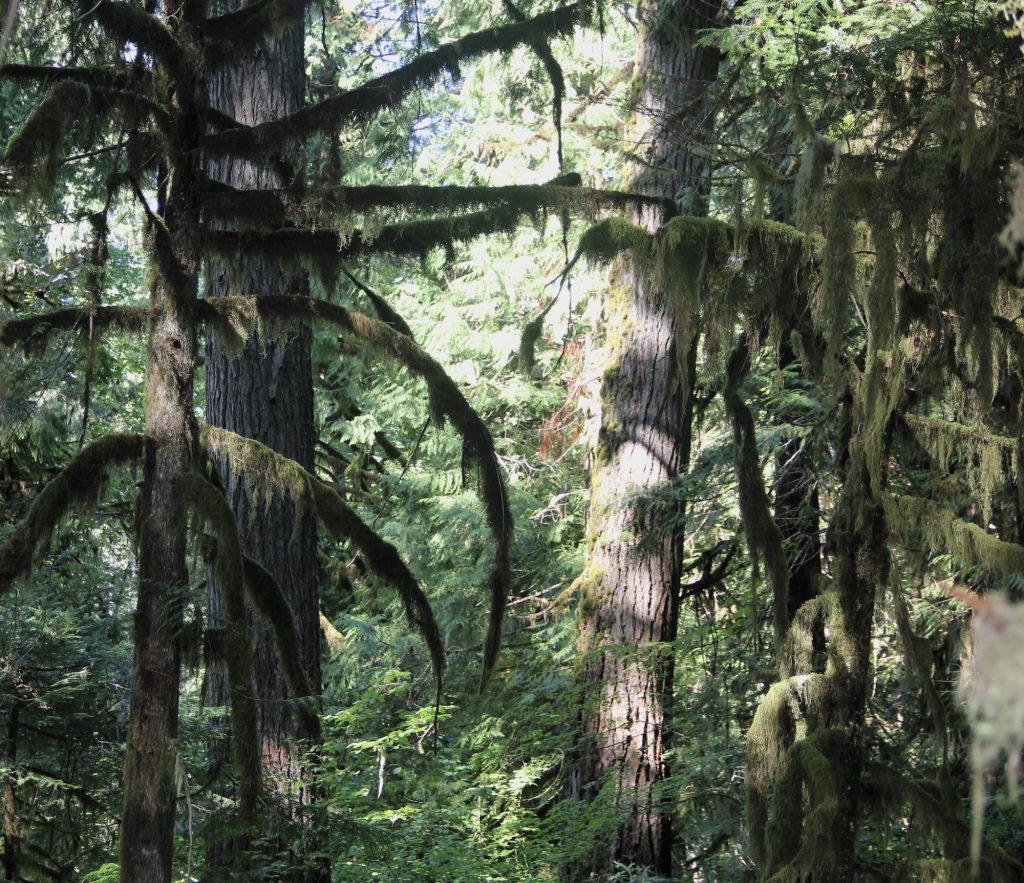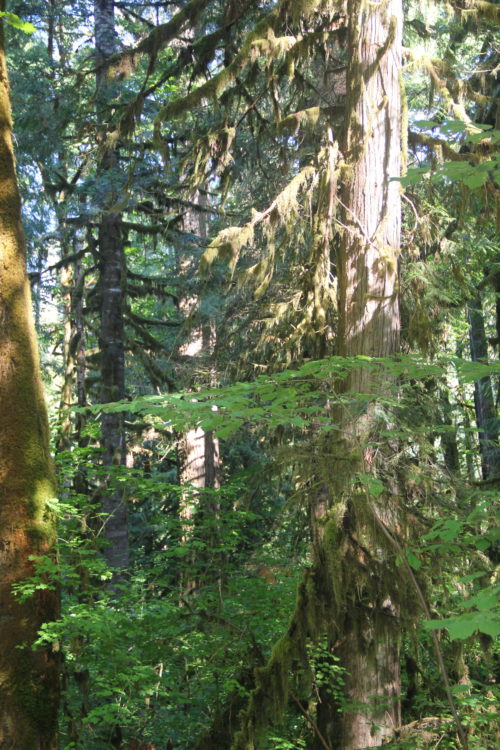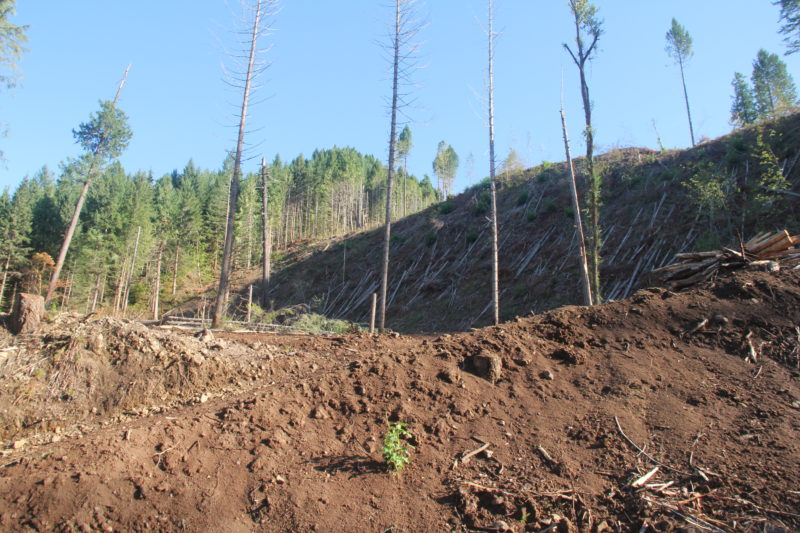While the North Umpqua is the most dramatic, the Umpqua Sweets project would log along many smaller streams. Unit 25-2-31B, just up the Rock Creek road from the river, is located along Rock, McComas, and Kelley Creeks just north of Idylide. The road cuts off into a nice little neighborhood there of a handful of homes.

The trees through parts of this unit were exceptional. This is a dinosaur forest: big, primeval, and green. Fatty douglas fir and swampy ancient cedar droop with moss and lichen. The steady hush of Rock Creek mixes with the breeze through the high forest canopy.
This is old-growth. On the chopping block. On public forests. In 2019.
On top of the primary industrial logging unit, here too the agency proposes stream-side logging for the purpose of riparian restoration. What about this ancient grove of huge trees needs restoration is a mystery.
It is commonly believed that public agencies don’t log old-growth anymore, and for the most part, in our area, since the Northwest Forest Plan was passed, that is true.
The BLM’s new management plan leaves them some wiggle room, and Umpqua Sweets suggests they are taking advantage of it. The BLM’s rule protecting old-growth is that a tree can’t be sold if it is (1) bigger than 40″ in diameter, and (2) BLM determines that it was born before 1850.
I measured a bunch of trees well over 40′ diameter in the unit, and wondered if BLM will protect them.
What we also found are lots of trees that fell just below the 40″ threshold, including many that must be old growth. They seemed especially common among the slower growing species like cedar, which were well-represented here especially closest to water. I measured one tree in this unit that was as close to 40″ as it could possibly be without hitting the line.
Maybe with another year or two it can put on the extra centimeter girth and live a few centuries more.
Not-a-Clearcut
The BLM says they don’t clearcut anymore. It’s all “regeneration harvest” and “ecological forestry” now.
There is some truth in what they say. Some truth. But more falsehood.
About a mile further up the road from the Rock Creek unit you pass through a section of BLM-owned land that was logged just this year. The sweet smell of wood chips and sap, and of sunshine striking bare earth, is on the wind.
Trucks of men were just pulling out of bark-strewn parking areas as I pulled in. The stripped hillside was strewn with fallen logs.
There are definitely trees left standing, including most or even all of what little legacy old-growth had been there before. That is meaningful progress as compared with private landowners, which ravage their land with bulldozers and chemicals and laboratory trees.
But as compared with other public land agencies like the Forest Service, or even compared with the BLM itself just a few years ago, these logging methods are incredibly intensive.
The logic of this kind of forestry is to “regenerate” a new stand of fast-growing Douglas fir by clearing out the old forest. It is “regeneration” only and exactly to the extent that it is “clearing.” It is regeneration in the sense that death begets life.
It used to be they called this exact same method a “clearcut with reserves.” That was an honest description.
Looking at the fresh logged unit, it’s a clearcut. Less bad than some others, but still a clearcut. It sure isn’t a forest!
A few trees are standing, but there were so many more trees knocked over and hauled away. On a hot sunny day, the air felt like a field or a parking lot, not a forest. The standing trees aren’t enough to ever touch one another. Many of them will blow down. The ground and plant ground-cover was profoundly impacted. It is compacted flat in some places, and ploughed up in others, with massive machine-piles of slash that will be burned. The smells, while sweet and familiar, were of a construction project or a farm, not any wild place.
Call it whatever you want. It is destruction.
And in 2019, it should not be happening in our old-growth forest.
*It is not too late to TAKE ACTION to help convince BLM to consider a conservation alternative. And stay tuned for part 3, in which we head up into the hills and discover the Eye of God.




